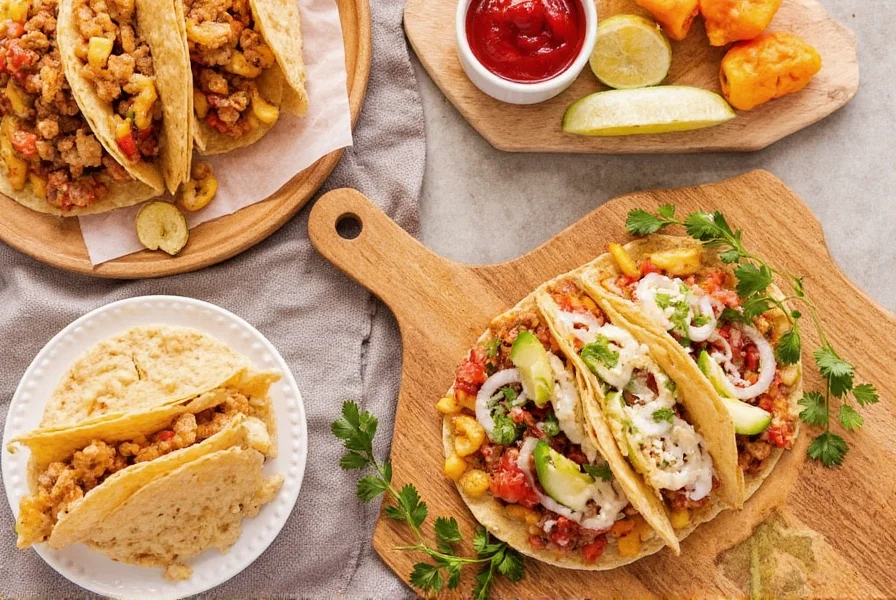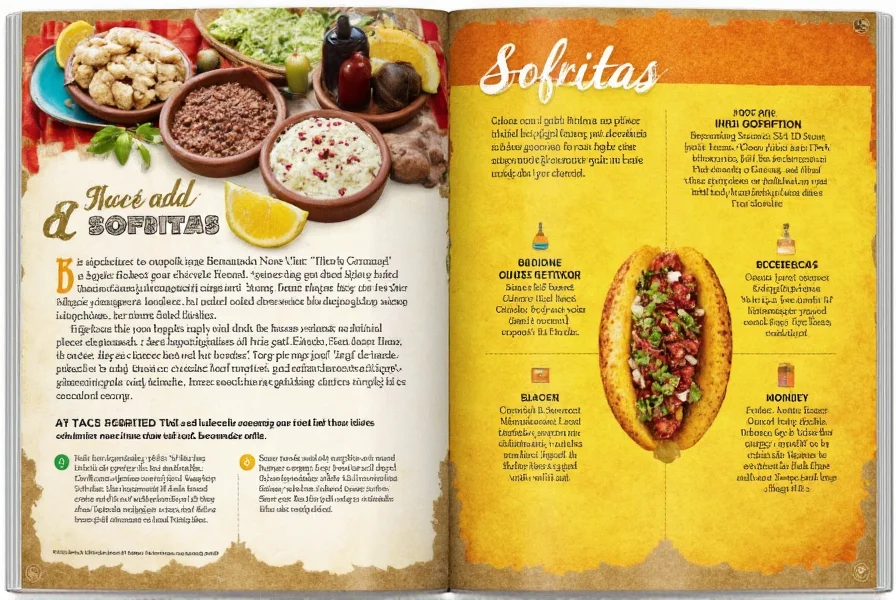If you're a spice enthusiast or just starting to explore the world of bold flavors, you've probably heard the term sofritas floating around. But what exactly are they? In this article, we'll dive into the origins, uses, and unique characteristics of sofritas, all while keeping things light, fun, and informative. Whether you're a seasoned cook or a curious beginner, this guide will help you understand why sofritas are a must-have in your kitchen.
Table of Contents
- What Are Sofritas?
- Origin and History
- Flavor Profile
- How to Use Sofritas
- Buying Guide
- Common Mistakes
- Frequently Asked Questions
- Conclusion
What Are Sofritas?
Sofritas (pronounced soh-FREE-tas) are a plant-based meat substitute made from tofu (soy protein) that is seasoned with Mexican spices. They are commonly used in Mexican-inspired dishes like tacos, burritos, and enchiladas. The name 'sofritas' comes from the Spanish word 'sofreír', meaning 'to sauté,' which refers to the traditional Latin American cooking technique of sautéing vegetables (like onions, garlic, and peppers) to create a flavor base. However, the plant-based product known as 'sofritas' was popularized by Chipotle in 2014 and is made from crumbled tofu that is seasoned to mimic the flavor of that traditional base.
Unlike traditional ground meat, sofritas have a texture that mimics shredded chicken or beef, making them a popular choice for vegetarians and vegans alike.
Origin and History
Sofritas were popularized by Chipotle, a fast-casual restaurant chain, in 2014. The dish is inspired by the traditional Latin American cooking technique called 'sofrito,' which is a sautéed mixture of onions, garlic, peppers, and tomatoes used as a base for many dishes. Chipotle created a plant-based version using tofu, which they named 'sofritas' to honor this culinary tradition.
While the concept of using soy-based proteins as meat substitutes has existed for decades (especially in Asian cuisines), Chipotle's sofritas became the first widely recognized plant-based version in mainstream fast-casual dining. Today, sofritas are widely available in grocery stores and can be found in many fast-casual restaurants. Their popularity has grown significantly, especially among those looking for healthier, sustainable, and cruelty-free food options.

Flavor Profile
Sofritas are known for their rich, savory flavor. They're typically seasoned with a blend of spices such as cumin, garlic, onion, and chili powder, giving them a deep, smoky, and slightly spicy taste. When cooked properly, they develop a nice caramelized crust, adding an extra layer of flavor.
One of the best things about sofritas is how versatile they are. They absorb the flavors of the ingredients they're cooked with, making them perfect for everything from tacos to stews and even pasta dishes.
How to Use Sofritas
Using sofritas in your cooking is simple and straightforward. Here are a few quick tips to get started:
- Shred it: Before cooking, break up the tofu or soy product into small pieces. This helps it cook evenly and mimic the texture of shredded meat.
- Season it: Add your favorite spices, such as cumin, paprika, garlic powder, and chili flakes, to give it a rich, savory base.
- Cook it: Sauté the mixture in a pan with oil or broth until it's crispy and golden brown. This step enhances the flavor and gives it a nice texture.
- Pair it: Serve it in tacos, burritos, bowls, or even as a topping for salads and soups.
Pro Tip: Don't Overcook It
While some people prefer their sofritas crispy, overcooking can make them dry and tough. Aim for a golden-brown color and a slightly chewy texture for the best results.
Buying Guide
If you're looking to try sofritas, here's a quick buying guide to help you choose the right product:
Product 1: Organic Soy Protein Crumbles
- Features: Made from non-GMO soy, free from artificial additives, and high in protein.
- Advantages: Great for health-conscious eaters, eco-friendly packaging, and easy to find in most supermarkets.
- Use Cases: Tacos, burritos, stir-fries, and grain bowls.
- Target Audience: Vegetarians, vegans, and anyone seeking a plant-based protein source.
- Suitable Occasions: Weeknight dinners, meal prepping, and casual gatherings.
Product 2: Spiced Tofu Crumbles
- Features: Pre-seasoned with a mix of Mexican spices like cumin, chili, and garlic.
- Advantages: Ready-to-use, saves time, and adds immediate flavor to any dish.
- Use Cases: Breakfast scrambles, stuffed peppers, and Mexican-inspired main courses.
- Target Audience: Busy individuals, families, and those new to plant-based eating.
- Suitable Occasions: Quick lunches, family dinners, and dinner parties.
Product 3: Vegan Ground Meat Alternative
- Features: Mimics the texture of ground beef, made from a blend of plant-based ingredients.
- Advantages: High in fiber, low in fat, and great for recipes that call for ground meat.
- Use Cases: Bolognese sauce, meatloaf, and vegetarian chili.
- Target Audience: People transitioning to a plant-based diet, or those who miss the taste of meat.
- Suitable Occasions: Comfort meals, potlucks, and holiday feasts.

Common Mistakes
Even experienced cooks can sometimes make mistakes when working with sofritas. Here are a few things to avoid:
- Not seasoning enough: Sofritas need a good amount of spices to bring out their flavor. Don't be afraid to experiment with different seasonings.
- Overcooking: As mentioned earlier, overcooking can dry them out. Keep an eye on the heat and don't leave them unattended on the stove.
- Skipping the sauté: Sautéing gives sofritas that delicious, slightly crispy texture. Skipping this step can result in a soggy, bland dish.
- Using the wrong recipe: Not all recipes are created equal. Choose ones that complement the texture and flavor of sofritas rather than trying to force them into unsuitable dishes.
Frequently Asked Questions
What exactly are sofritas?
Sofritas are a plant-based meat substitute made from tofu (soy protein), typically seasoned with Mexican spices like cumin, garlic, and chili powder. They have a texture that mimics shredded chicken or beef, making them ideal for tacos, burritos, and other Mexican-inspired dishes.
Are sofritas the same as tofu?
While both are soy-based, sofritas are specifically formulated to have a crumbled, meat-like texture and are pre-seasoned with Mexican spices. Regular tofu has a smoother, denser texture and is usually unflavored, requiring additional seasoning when used in recipes.
Are sofritas vegan?
Yes, sofritas are typically vegan as they're made from soy protein and plant-based ingredients with no animal products. Always check the ingredient list if you have specific dietary requirements, as formulations can vary by brand.
Where can I buy sofritas?
Sofritas are available at most major grocery stores in the refrigerated or frozen plant-based protein section. Popular brands like Trader Joe's, Whole Foods, and MorningStar Farms offer their own versions. They're also commonly found at health food stores and some fast-casual restaurants like Chipotle.
How do I cook with sofritas?
Sofritas can be used as a direct substitute for ground meat in most recipes. Simply heat them in a pan with a little oil until warmed through and slightly crispy. For best results, add them to dishes during the final cooking stages to preserve their texture. They work well in tacos, burritos, enchiladas, pasta dishes, and even breakfast scrambles.
Are sofritas healthy?
Sofritas are generally high in plant-based protein and fiber while being lower in saturated fat than traditional ground beef. A typical serving provides around 15-20 grams of protein and is a good source of iron and other nutrients. They're a healthier alternative to meat for many people, though sodium content can vary by brand.
How long do sofritas last in the refrigerator?
Unopened packages typically last until the expiration date printed on the package. Once opened, they should be consumed within 3-5 days when stored in an airtight container in the refrigerator. You can also freeze sofritas for longer storage—up to 3 months—though the texture may change slightly when thawed.
Conclusion
In summary, sofritas are a versatile, flavorful, and nutritious plant-based protein option that's perfect for a wide range of dishes. Whether you're a long-time vegan, a flexitarian, or simply curious about new ways to enjoy your meals, sofritas offer a delicious and satisfying alternative to traditional meat.
By understanding their origin, flavor profile, and best practices for use, you can unlock the full potential of this incredible ingredient. With the right approach, sofritas can become a staple in your kitchen, bringing both convenience and flavor to your plate.










 浙公网安备
33010002000092号
浙公网安备
33010002000092号 浙B2-20120091-4
浙B2-20120091-4